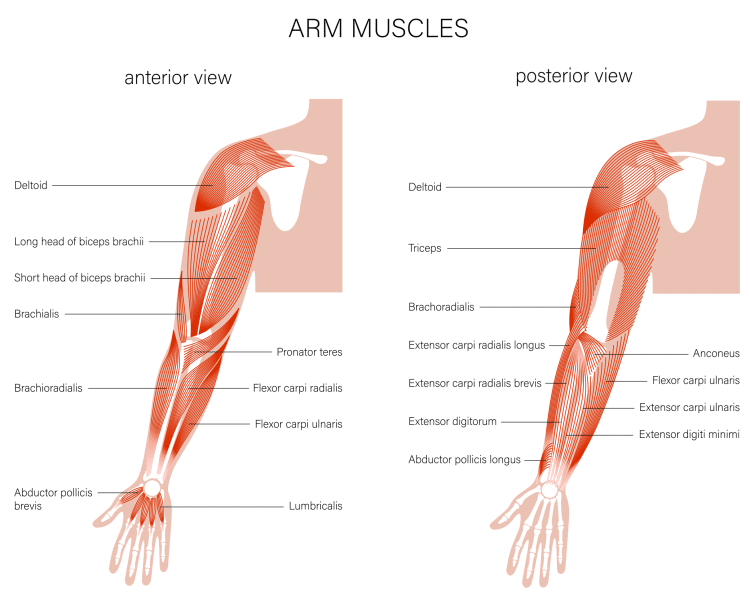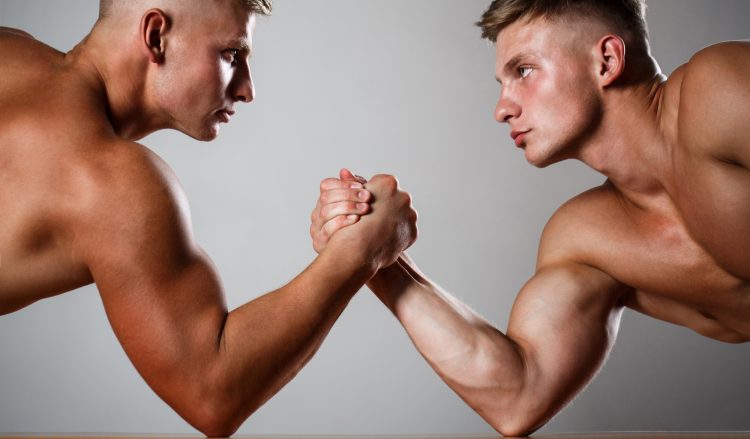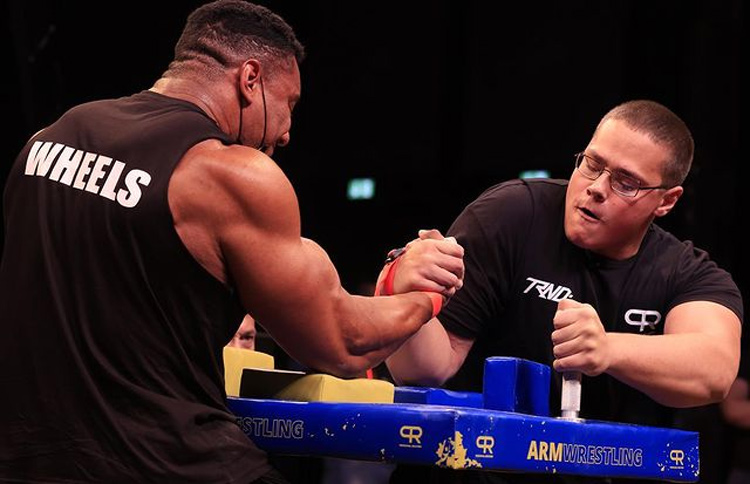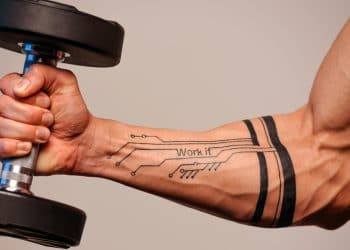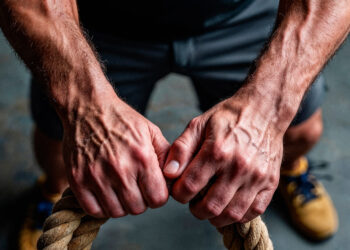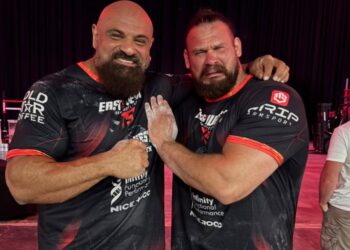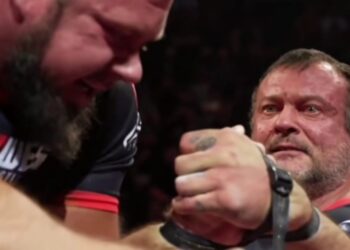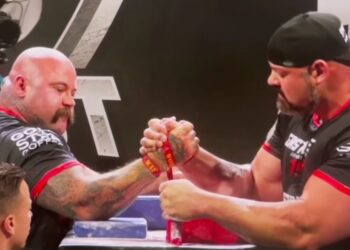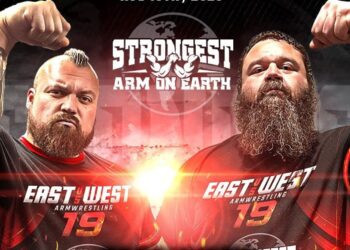Arm wrestling is one of the most popular tests of strength. Pitting one person against another, arm wrestling matches range from casual and informal to serious and professional. However, regardless of the standard or setting, the objective in arm wrestling is always the same – to pin your opponent’s hand to the table.
Many people think that success in arm wrestling is all about muscle power. But while strength is undeniably important, it’s not the only thing that matters. It’s not unheard of for smaller, weaker wrestlers to beat bigger, stronger opponents with their superior technique and guile.
In this article, we reveal the best strategies and techniques for getting better at arm wrestling.
Train for Victory
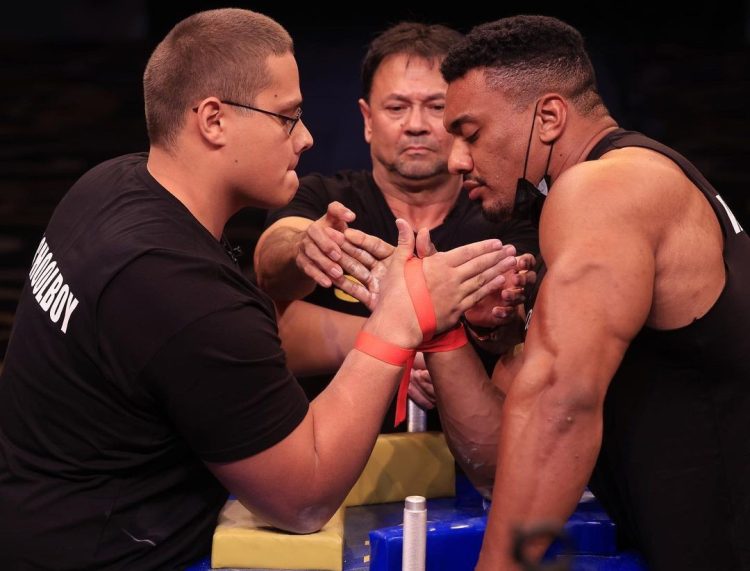
While technique can sometimes overcome strength in arm wrestling, the stronger you are, the harder you’ll be to beat, and the more likely you are to win your matches. It’s no coincidence that many top arm wrestlers are also heavily muscled. Subsequently, most serious competitors include weight training in their arm-wrestling workouts.
Arm wrestlers need three different types of strength:
- Maximal strength – the maximum amount of force you can generate.
- Power – force generated quickly.
- Endurance – the ability to resist fatigue.
Consequently, arm wrestlers should include strength, power, and endurance exercises in their workouts.
Level Up Your Fitness: Join our 💪 strong community in Fitness Volt Newsletter. Get daily inspiration, expert-backed workouts, nutrition tips, the latest in strength sports, and the support you need to reach your goals. Subscribe for free!
Strength is best developed with heavy weights and low reps, while endurance is the opposite – light weights and high reps. Power is best developed using moderate weights and fast movements. Developing all three types of strength will make you a formidable arm-wrestling opponent.
Contrary to what many people think, arm wrestling is not just a test of arm strength. Rather, it involves virtually your entire body. That said, research published on PubMed highlights several critical upper body and forearm arm wrestling muscles, including (1):
- Pectoralis Major
- Biceps Brachii
- Pronator Teres
- Flexor Carpi Ulnaris
This means arm wrestlers should build their strength training workouts around compound or multi-joint exercises to build basic full-body strength while paying extra attention to the muscles used in arm wrestling.
Here are two simple full-body training programs designed to achieve precisely that. Do each workout 1-2 timers per week on non-consecutive days:
Related: How to Warm Up for Strength Training
Arm Wrestling Workout #1
| Exercise | Sets | Reps | Recovery | |
| 1 | Squats | 4 | 4-6 | 3 minutes |
| 2 | Leg curls | 4 | 8-10 | 90 seconds |
| 3 | Cable internal rotation | 3 | 12-15 | 60 seconds |
| 4 | Pull-ups | 3 | AMRAP | 90 seconds |
| 5 | Bench press | 3 | 6-8 | 90 seconds |
| 6 | Hammer preacher curls | 2 | 6-8 | 90 seconds |
| 7 | Wrist curls | 2 | 10-12 | 60 seconds |
| 8 | Dead hang | 2 | 30-60 secs. | 90 seconds |
Arm Wrestling Workout #2
| Exercise | Sets | Reps | Recovery | |
| 1 | Deadlift | 4 | 4-6 | 3 minutes |
| 2 | Leg extension | 4 | 8-10 | 90 seconds |
| 3 | Cable external rotation | 3 | 12-15 | 60 seconds |
| 4 | 1-arm DB row | 3 | 8-10 | 90 seconds |
| 5 | Shoulder press | 3 | 6-8 | 90 seconds |
| 6 | Reverse curl | 2 | 6-8 | 90 seconds |
| 7 | Wrist roller | 2 | 10-12 | 60 seconds |
| 8 | Farmer’s walk | 2 | 30-60 secs. | 90 seconds |
Summary: The stronger you are, the more likely you are to win at arm wrestling. General full-body strength is vital, but you should emphasize the most critical arm-wrestling muscles, which include the biceps, shoulders, and forearms.
Related: The 10 Best Forearm Exercises for Arm Wrestling
Work on Your Technique
When two equally strong arm wrestlers face off, the winner is usually the person with the best technique. However, in some cases, smaller, weaker wrestlers can beat bigger, stronger opponents. So, while what you do in the gym will play a part in your arm-wrestling success, you must also learn how to arm-wrestle properly.
It’s beyond the scope of this article to teach you all the ins and outs of arm wrestling – entire books have been written about the subject! However, here are the basics you need to know and work on to get started.
Stance
You can’t fire a cannon out of a canoe, and you won’t win an arm-wrestling match if you are unsteady on your feet. So, before you start, make sure you adopt a solid, stable stance so you are as grounded as possible.
Stand with your dominant foot forward and your hip against the edge of the table. Therefore, if you are wrestling right-handed, your right foot should be in front. Bend your knees slightly and position your feet about shoulder-width apart.
If possible, put the outside of your dominant foot against the inside of the table leg. This allows you to use your legs for added power.
Lastly, place your elbow on the table directly in front of you, centered with your body, and about 3-4 inches from your chest. The closer your arm is to your body, the stronger your position will be.
Set-Up and Grip
Grip your opponent’s hand firmly, keeping your knuckles as high as possible. Make sure you wrap your index finger around your thumb. Curl your wrist and try to pull their hand toward your chest to maximize your leverage. Remember, though, they’ll be trying to do the same thing to you!
Wrestle!
On the command to start, turn your palm toward your face to weaken your opponent’s grip. If you can, slide your hand upward so your palm covers their knuckles. This longer lever will give you a mechanical advantage, allowing you to bend their wrist back more easily.
It’s usually best to try to win arm wrestling matches as quickly as possible. With that in mind, attack hard and fast, using maximal strength and muscle power.
Think Tactically
Don’t just try and push your opponent’s hand down. Instead, assess how the match is going and alter your tactics accordingly. For example:
Level Up Your Fitness: Join our 💪 strong community in Fitness Volt Newsletter. Get daily inspiration, expert-backed workouts, nutrition tips, the latest in strength sports, and the support you need to reach your goals. Subscribe for free!
- Make a quick early move to surprise and overpower your opponent.
- Hold steady to let your opponent tire themselves out.
- “Hook” their hand toward you to gain a leverage advantage.
- “Top roll” and turn their palm up to weaken their grip.
- Look impassive and relaxed, even if you know you are weaker than your opponent. You may fool them into underestimating you.
Finish Them!
Once you have gained the upper hand, it’s time to press your advantage and finish the match. Turn your body and push your shoulder in the direction you want your arm to go. So, if you’re right-handed, lean your right shoulder in.
This technique allows you to use your shoulder strength and body weight to push your opponent’s hand down. Keep going until the back of their hand touches the tabletop.
Conversely, don’t flex your wrist to keep your hand an inch off the table if you are losing. This prolongs a match you cannot win and is generally considered poor form. Give up if you know you have no chance of pushing their arm back up.
Losing with Grace
The strategies in this article should help you win more arm wrestling matches than you lose. However, even the best arm wrestlers are defeated from time to time, and you need to accept that it’ll happen to you, too.
So, be gracious in defeat and acknowledge that the best man won. Your opponent may have been stronger than you or more technically proficient. Either way, learn from your defeat and work on your weaknesses so you can be victorious next time.
Summary: Do not underestimate the importance of technique in arm wrestling. Practice these methods until you can do them quickly, smoothly, and powerfully.
FAQ’s
Do you have a question about getting better at arm wrestling? No problem – I’ve got you covered! But if you need more information, please drop me a line in the comment section below, and I’ll get back to you ASAP.
1. Is arm wrestling safe?
Arm wrestling injuries are pretty common. Joint sprains and muscle strains are a constant risk, and fractures also occur. The biceps, shoulders, and forearms are particularly susceptible to injury during arm wrestling (2).
The good news is that strength training and good arm-wrestling technique can significantly reduce your injury risk.
Warming up before arm wrestling will also help lower your injury risk. Stretch and mobilize your wrists, elbows, and shoulders before starting. Use recovery tools such as massage guns, foam rolling, ice, and trigger point therapy afterward to stop minor aches and pains from turning into more serious problems.
2. What are some of the best strength exercises for arm wrestling?
Arm wrestling is a full-body activity that emphasizes the biceps, forearms, and shoulders. As such, you should train your entire body while spending additional time on those critical arm-wrestling muscles.
Good exercises for arm wrestlers include:
- Preacher hammer curls
- Cable internal and external rotations
- Wrist and reverse wrist curls
- Reverse barbell curls
- Farmer’s walks
3. Do arm wrestlers compete standing or seated?
Official arm-wrestling matches take place at tall standing tables. These tables provide a stable platform for the athletes to work from. The tabletops have touchdown pads and handles for the non-dominant hand to hold.
In contrast, informal arm-wrestling matches often happen at regular tables while seated, e.g., at a bar.
While standing vs. seated arm wrestling requires a different initial set-up position, the principles remain the same, i.e., elbow centered and about 3-4 inches from your chest, dominant hip forward, and your opponent’s hand pulled toward you.
4. Can a smaller person really beat a bigger, stronger opponent?
While the benefits of strength and size cannot be ignored, there are plenty of times when “David beat Goliath” in arm wrestling. For example, bodybuilder, powerlifter, and strongman Larry Wheels was famously beaten by a schoolboy. This goes to show that technique is as important as strength in arm wrestling.
So, while it’s generally best to arm wrestle similar-sized opponents, experienced arm wrestlers may be able to win against much bigger arm wrestlers. You won’t know unless you try!
5. Do women arm wrestle?
Many women compete in arm wrestling, and there are local, regional, national, and international competitions. While not as high-profile as the men’s sport, female arm wrestling has a big following, and the matches are highly entertaining.
Some female arm wrestlers even take on (and beat) male opponents, again highlighting the importance of good technique.
Closing Thoughts
Arm wrestling is a popular way to test your strength, and while some people are naturally good at it, you can train yourself to get better at arm wrestling.
First, you need to develop your muscles, not just in your arms but throughout your entire body. However, you should pay extra attention to your biceps, shoulders, and forearms, which are most heavily involved in this activity.
Then, you must learn how to arm wrestle. Perfect your stance, set-up, and grip, and work on your hook and top roll. Remember that a technically proficient arm wrestler can often beat a bigger, less-skilled opponent.
Finally, spend time practicing and learning everything you can about arm wrestling. Watch videos, read articles, and take on a variety of opponents. The more you practice and the more you’ll know, the better you’ll get.
Stay up-to-date with all the latest arm wrestling by visiting our dedicated arm wrestling hub!
References:
- Silva DC, Silva Z, Sousa Gda C, Silva LF, Marques Kdo V, Soares AB, Cerqueira EP, Liberti EA, Bérzin F. Electromyographic evaluation of upper limb muscles involved in armwrestling sports simulation during dynamic and static conditions. J Electromyogr Kinesiol. 2009 Dec;19(6):e448-57. doi: 10.1016/j.jelekin.2008.09.014. Epub 2008 Dec 16. PMID: 19091596.
- Moloney DP, Feeley I, Hughes AJ, Merghani K, Sheehan E, Kennedy M. Injuries associated with arm wrestling: A narrative review. J Clin Orthop Trauma. 2021 Apr 20;18:30-37. doi: 10.1016/j.jcot.2021.04.010. Erratum in: J Clin Orthop Trauma. 2021 Jul 30;20:101539. PMID: 33996446; PMCID: PMC8091050.

